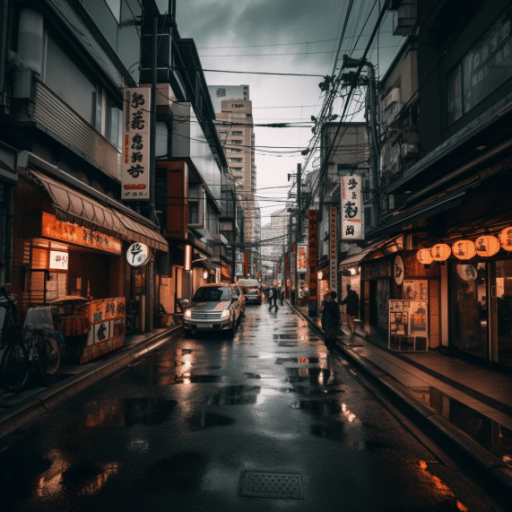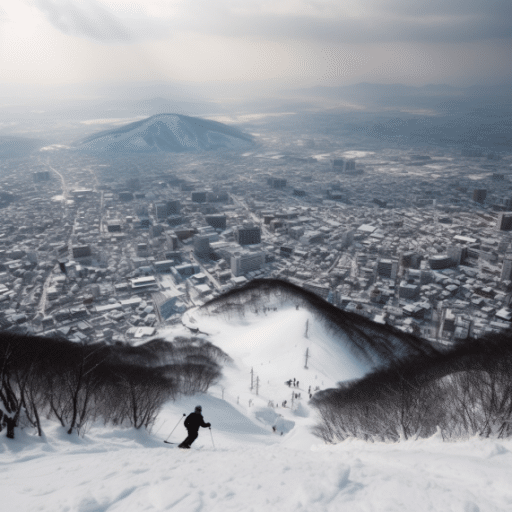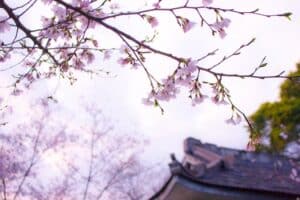(This article was last updated on April 21, 2023.)
Let’s talk about the places to retire in Japan for expats.
Job prospects abound in the Land of the Cherry Blossom, but what draws others in is Japan‘s rich culture, traditions, and delectable cuisine.
People moving to Japan can choose between living in one of the megacities or in the peace and quiet of the country’s more rural areas, all while benefiting from one of the world’s lowest crime rates, a well-developed nationwide transportation system, robot fights in Tokyo, and a year-round Pikachu parade in Yokohama.
If you are looking to invest in better alternatives, or want a second opinion, you can contact me on advice@adamfayed.com or use the chat function below.
What is it like to be an expat in Japan, and more importantly, where do you live?
We looked at where Japan’s more than 3 million expat and foreigner inhabitants live (as of year-end 2022), and here are the five places to retire in Japan for expats to help you pick which part of the country is appropriate for you!
Tokyo
Tokyo has the largest population density of any Japanese metropolis, with over 8 million residents as of the time of this update. It is Japan’s capital as well as the country’s cultural, political, and financial center.
Tokyo is one of the best places to live in Japan because it offers the right blend of high-tech and traditional.
Peaceful residential lanes, Japanese gardens, and the occasional sighting of a Geisha in the park coexist alongside business hubs, high-rise skyscrapers, and enormous shopping areas.
The majority of expats working for multinational corporations dwell in central Tokyo, primarily in Minato-ku and Shibuya-ku. These locations are Tokyo’s business districts, with major corporations having offices there. They are also home to international hospitals, shopping malls, restaurants, and other businesses and services catering to expats and English-speaking customers.
In these safe and convenient regions, there are also numerous foreign schools and residential homes developed in a western manner for expat families.
Minato-ku, Tokyo
Minato-ku, in particular, is regarded as one of Japan’s most international districts. Omotesando, Roppongi, Shirokane, and Akasaka are all parts of Minato City.
Shibuya-ku, Tokyo
Shibuya Train Station is one of Tokyo’s most well-connected, making living in the neighborhood highly easy.
Shibuya City is home to opulent residential areas such as Hiroo, Shoto, and Yoyogi-Uehara. There are also fashionable shopping districts such as Daikanyama, Ebisu, and Omotesando.
Shibuya Crossing, Japan’s most renowned and largest street crossing, is also in the neighborhood. Approximately 3,000 people are said to cross each time the pedestrian light turns green.
Shinjuku-ku, Tokyo
Shinjuku, located north of Shibuya-ku, is one of Tokyo’s most popular, busy, and largest retail districts, with a variety of electronic stores, marketplaces, and malls.
Chiyoda-ku, Tokyo
Chiyoda City, north of Minato-ku, is a more tranquil area of the city. It houses the Imperial Palace, the National Diet Building, the Prime Minister’s office and residence, and the Supreme Court. Many global firms also have offices in the neighborhood, in addition to government agencies and foreign embassies.
Bancho, Kojimachi, Kudan, and Ichigaya are Chiyoda-ku’s residential zones.
During the Edo era, samurai and other feudal lords lived there, and remnants of the Edo era may still be found in the area.
Meguro-Ku, Tokyo
Expats prefer Meguro City because it provides a well-organized and convenient living environment.
This popular, well-developed residential area is conveniently located in central Tokyo, making it a great place to call home.
Jiyugaoka is a popular shopping district in Meguro, while Nakameguro is a residential neighborhood.
Although living in Meguro-ku is not inexpensive, inhabitants are willing to pay for serenity and convenience anyplace in the globe. It is one of Japan’s most costly cities, yet it is also one of the most popular expat destinations.
If you like to try new things on a daily basis, Japan’s capital city might be the place for you.

Is Tokyo a walkable city?
Yes, it can be walkable. Although for many visitors and inhabitants of Tokyo, commuting is a pleasurable experience. Several meandering lanes throughout the city host a variety of facilities. You won’t have to waste time getting to your intended places because various facilities are close together.
It boasts a reliable public transit system that can support both active and passive lifestyles.
Is Tokyo safe?
Tokyo, despite its size, is one of Japan’s safest cities, with low crime rates. However, certain areas like Kabukicho and Roppongi are deemed high-risk areas since they are nightlife districts.
Although expats can live in any neighborhood in Tokyo, many of them dwell in the Minato-ku and Shibuya-kyu wards.
Cost of Living in Tokyo
If you’re a family of four in Tokyo, you need about 509,222 yen or 3,806 USD to pay for monthly living expenses. If you’re single, you need 142,229.5 yen or 1,063 USD. These costs still exclude rental costs.
Landlords seek between 88,736.5 yen to 151,000 yen (663.5 USD to 1,129 USD) for monthly rental of an apartment with one bedroom. The cost will depend on the location, that is, if it’s outside or inside the main city.
Meanwhile, a meal at a cheap place can cost a minimum of 7 USD.
Kyoto
Kyoto is home to nearly 1.5 million people. Many expats in the city work in the hotel industry as it is a popular tourist destination and cultural center.
Information technology, electronics, and traditional handicraft goods are all important economic sectors in Kyoto.
The city is known for its traditional wooden buildings, gardens, royal palaces, Shinto shrines, and classical Buddhist monasteries. Tourists travel from all over the world to enjoy Japanese tranquility as well as cuisines located in Nishiki, Kyoto’s most famous market. Several restaurants, markets, and geisha entertainment can be found in the city’s Gion neighborhood.
Kyoto’s public transportation system is superb, with direct bus and train connections to Osaka that take roughly an hour by bus or 30 minutes by train.
The city is a fantastic location for individuals who want to be close to Japanese temples and gardens while yet being a short distance from the typical Japanese major city activity.
Many people consider Kyoto, Japan’s former capital before Tokyo, to be one of the safest cities in the country when they ask, “What is the safest city in Japan?”
Is Kyoto walkable?
Because of its flat, gridded streets, most Kyoto inhabitants find the city easy to navigate, making it excellent for strolling or cycling. The city’s layout also makes traveling by train, subway, or cab simple.
Is Kyoto safe?
Kyoto has one of the lowest crime rates in Japan, making it one of the safest cities in the country. Regardless of the low rate, you need take measures wherever you go to prevent getting into problems.
The area is also susceptible to earthquakes and tsunamis on occasion.
Cost of Living in Kyoto
If you’re a family of four in Kyoto, you need about 437,682 yen or 3,271 USD to pay for monthly living expenses. If you’re single, you need 121,936 yen or 911 USD. These costs still exclude rental costs.
Landlords ask for between 48,750 yen to 74,959 yen (364 USD to 560 USD) for monthly rental of a one-bedroom apartment. The actual cost will depend on the location.
Meanwhile, a meal at a cheap place can cost at least 6 USD.
Yokohama
Yokohama is located south of Tokyo, and the rail journey between the two cities takes about 30 minutes.
It is, of course, a less expensive place to rent and live, which is why some expats choose to reside there while working in Tokyo. Most expats are concentrated in the Yamate-cho and Minato Mirai areas. In addition, families with children (not just expats) frequently choose to relocate to Yokohama because of its affordability and peacefulness.
Yokohama is a bustling commercial and port metropolis that serves as Japan’s second-largest city, with a current population of over 3.5 million people.
The city benefits from its importance in the semiconductor, shipping, and biotechnology industries. It is known for its “Chinatown,” which is the largest Chinatown in Asia, with over 500 shops, restaurants, and other Chinese businesses. Cup Noodles Museum, Sankei-en Garden, and the contemporary beachfront Minatomirai are among the city’s many attractions.

Is Yokohama walkable?
Yokohama features a number of streets that provide pedestrians with an open passage through the city. The city’s structure is smaller and more compact than Tokyo’s, allowing visitors to explore without feeling overwhelmed by its enormity.
Is Yokohama safe?
The crime rate in Yokohama is low. Expect the unexpected, like you would in other parts of Japan, and keep an eye out for anything strange. Pick-pocketing and frauds are two crimes that foreigners may confront.
Cost of Living in Yokohama
If you’re a family of four in Yokohama, you need about 409,323 yen or 3,062 USD to pay for monthly living expenses. If you’re single, you need 116,850 yen or 874 USD. These costs still exclude rental costs.
Landlords seek between 90,116 yen to 120,916 yen (674 USD to 905 USD) for monthly rental of an apartment with one bedroom. The cost will depend on the location, that is, if it’s outside or inside the main city.
Meanwhile, a meal at a cheap place can cost a minimum of roughly 6 USD.
Osaka
Osaka is Japan’s third-largest city, with a current population of nearly 3.8 million people. Residing here might save you up to 30% compared to the capital city of Tokyo.
Osaka is known for its friendly population. Osaka and its residents are also famed for their cuisine, which includes okonomiyaki – a Japanese-style pancake with chopped cabbage – and takoyaki – a specialized octopus dumpling.
The majority of visitors come to Osaka for its wide rivers, efficient public transportation, and delicious cuisine. Osaka is also well-known for its thriving nightlife. It is a great place to live for expats who want to be in a big city with a lot of things to do.
Nevertheless, few speak English and expat job prospects are limited.
Is Osaka walkable?
Osaka is considered one of Japan’s most walkable cities. Most inhabitants find it simple to run daily errands, such as going to the grocery store, bank, or shopping center. Several train lines run throughout the city to help you get to your destination faster and in a more convenient manner than walking.
Is it safe in Osaka?
Despite the fact that there are safe zones around Osaka and the city has a low crime rate in general, crimes may occur more frequently than in other low-risk cities. Shinsekai, Tobita, and Airin/Kamagasaki are all areas to avoid in Osaka.
Cost of Living in Osaka
Osaka is one of Japan’s most expensive cities, although it thrives in a number of industries, including electronics, distribution, and communications.
If you’re a family of four in Osaka, you need about 433,870 yen or 3,243 USD to pay for monthly living expenses. If you’re single, you need 121,413 yen or 907.5 USD. These costs still exclude rental costs.
Landlords ask for between 51,667 yen to 83,266 yen (386 USD to 622 USD) for monthly rental of a one-bedroom apartment. The actual cost will depend on the location.
Meanwhile, a meal at a cheap place can cost at least 7 USD.
Sapporo
Sapporo is Japan’s fifth most populous city, with a current population of nearly 1.9 million people as of the time of this update. It’s in Hokkaido, Japan’s northernmost main island, and it’s a popular skiing destination for locals and visitors alike.
In addition, Sapporo is home to the Sapporo beer brand. The city is also known for Miso Ramen and cherry blossom viewing, which takes place from mid-April to early May each year.
The city has milder and cooler climate than other cities in Japan. It has a humid continental climate, with hot, humid summers and cold, snowy winters.
Because few people in Sapporo know English, it could be an excellent area to live in Japan for those who want to learn the language.
Information technology and tourism are two areas where foreigners might find work in Sapporo.
Expats prefer Sapporo to Tokyo, Osaka, and Yokohama because of its extremely efficient and well-organized transportation system, as well as its lower living costs – another reason it made the best cities to live in Japan list. It is another reasonably priced city in Japan that you might wish to look into.

Is Sapporo walkable?
Sapporo’s streets are planned out in a grid pattern, making it simple for visitors to navigate the city and visit its attractions. Many of them are easily accessible by foot. The streets also have well-defined crosswalks for increased pedestrian and driver safety.
Is Sapporo safe?
Sapporo is one of Japan’s safest cities, with a low crime rate.
Landlords seek between 35,000 yen to 52,500 yen (261.5 USD to 392 USD) for monthly rental of an apartment with one bedroom. The cost will depend on the location, that is, if it’s outside or inside the main city.
A meal at a cheap place can cost a minimum of 1,100 yen or about 8 USD, while a three-course meal for two people can cost 5,000 yen or 37 USD.
Top 5 Places to Retire in Japan for Expats: Final Thoughts
Large cities with abundance of career prospects, entertainment, food, and tourist options for international residents make up the top five best locations to live in Japan on our list.
Of course, there are other distinct spots in Japan for expats that are more low-key and local, such as gorgeous Okinawa for a more peaceful beach life or Kobe for fresh mountain air and a sophisticated and large cityscape.
Moving to Japan and seeing it for yourself is the greatest method to figure out which place is right for you.



